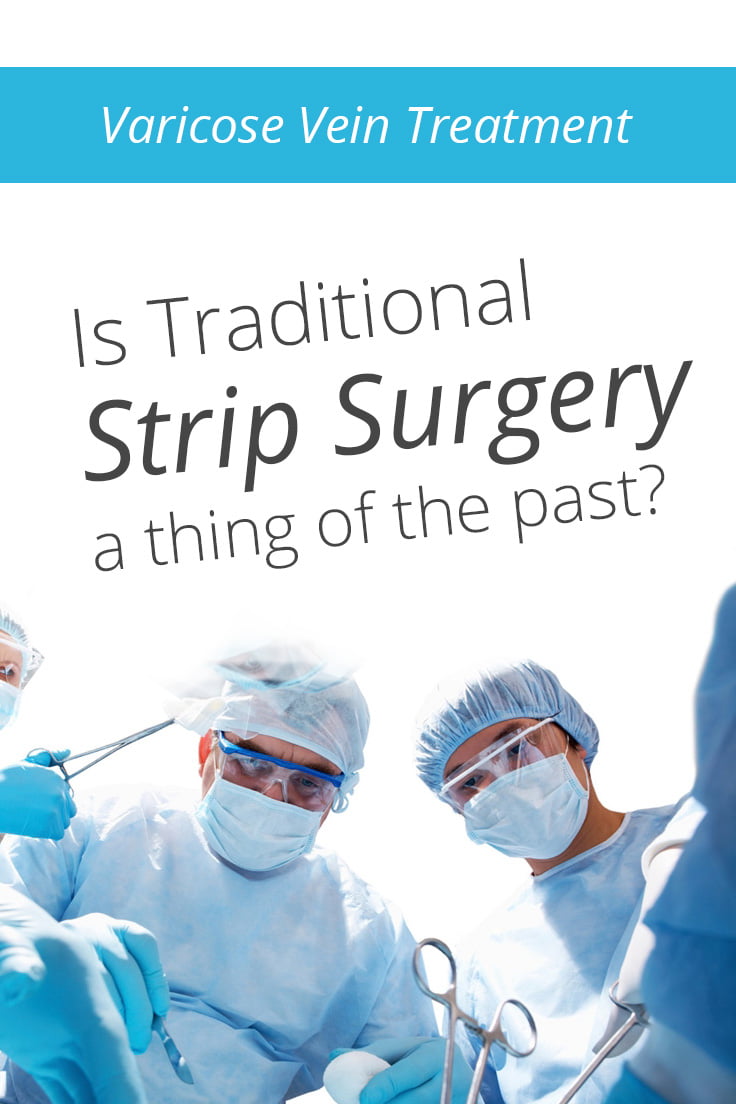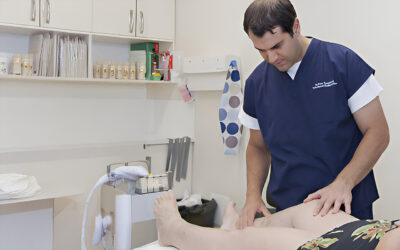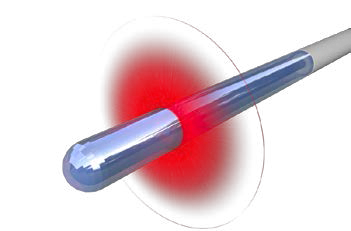Surgical Stripping. Sounds painful.
That’s pretty much the general consensus of patients who have actually had that treatment. But for quite some time surgical stripping of veins was the only option for people looking to relieve varicose vein disease.
History will show that most patients treated with that surgery will present with a recurrence directly related to the surgical procedure. With most recurrent veins originating from the groin area where the main vein was cut (high ligation). Other veins may come from damaged muscle openings (perforator veins), from pelvic veins, and other patients may develop extensive spider vein networks from all the cuts required to remove surface tributaries.
Given these factors, the increased risk of bleeding, infections, thrombosis, nerve damage and general anaesthetic complications, doctors in the field of phlebology dedicated themselves to come up with new, safer and more innovative procedures that could replace the invasive mainstay. Fast forward two decades and we now have several revolutionary, minimally invasive techniques that can be used in place of the traditional surgical technique. Surgical stripping is used sparingly these days and only under certain circumstances, whereas treatments that are less painful and more effective can be provided during walk-in-walk-out procedures performed under local anaesthetic at clinics like ours.
At the top of the list of these procedures is endovenous laser ablation and radiofrequency ablation. We also have ultrasound guided sclerotherapy to treat all the smaller veins connected to the large veins.
These procedures have all but replaced vein stripping in the USA and in Europe. In fact, the most recent NICE Guidelines out of the UK, advise endovenous laser and sclerotherapy before surgery – refer to section 1.3.2. Where endovenous procedures are not suitable, traditional surgery may then be an option. It is important to discuss all the alternatives with your treating vascular surgeon or phlebologist.
Further observations in past years also support the use of minimally invasive techniques for the treatment of varicose veins:
Medicare Services Advisory Committee (MSAC) Report 2008 (Commonwealth of Australia):
“From the literature available ELT appears to be potentially more effective in the short term, and at least as effective overall, as the comparative procedure of saphenous junction ligation and vein stripping for the treatment of varicose veins.”
2012 joint guidelines published by the American Venous Forum and the Society for Vascular Surgery:
“The need for such guidelines has been evident since imaging techniques and minimally invasive technologies have progressed by leaps and bounds and radio frequency ablation, laser and sclerotherapy have largely replaced classical open surgery of saphenous stripping. The management of varicose veins has rapidly progressed in the last two decades and open surgical treatment using the classical high ligation and saphenous stripping is rarely performed today”.
European guidelines for Sclerotherapy published in 2013:
“Sclerotherapy is recommended for all types of veins”.
Key Takeaways
- For many years, the only option to treat varicose veins and venous disease was vein stripping (or high ligation).
- Vein stripping has a greater risk of complications and recurrence of varicose veins.
- The state-of-the-art treatments available today are much less invasive and in many cases can be carried out within an hour or so, including treatments such as endovenous laser ablation, direct vision or ultrasound guided sclerotherapy, and even vein glue (VenaSeal).







